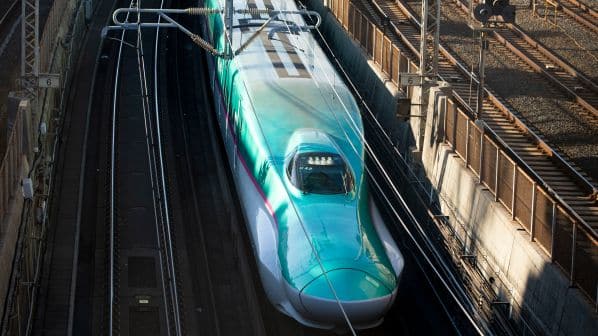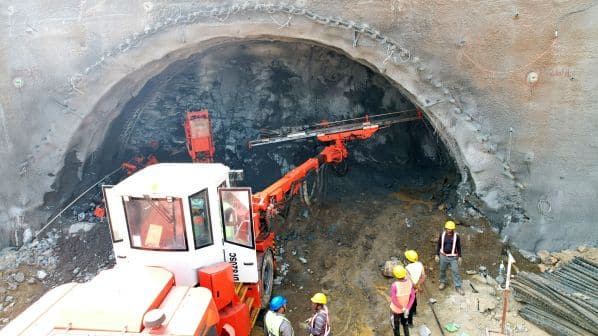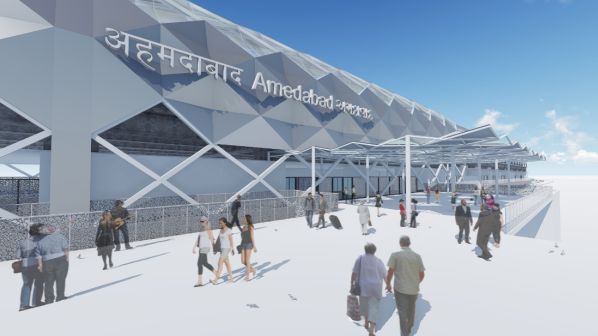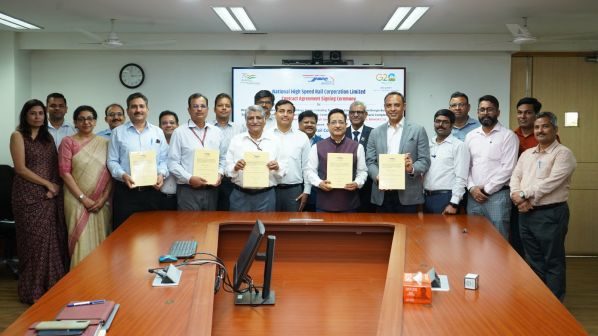INDIA’s National High Speed Rail Corporation (NHSRCL) has issued a tender worth an estimated Rs 110bn ($US 1.33bn) for the supply of 24 E5 series Shinkansen trains for the under-construction Mumbai - Ahmedabad high-speed line.
NHSRCL plans to use the first batch of the 10-car trains to conduct trials on a 50km section of the new railway between Surat and Bilimoria in Gujarat state in 2026. Each train will have capacity for 690 passengers.
According to the terms of the Japanese International Cooperation Agency (Jica) funding agreement for the high-speed project, only Japanese firms can submit bids for the rolling stock contracts. Hitachi Rail and Kawasaki Heavy Industries, which built the E5 for East Japan Railway (JR East), are therefore considered the front runners to win the contract.
Bids are expected to be submitted by the end of October, officials said, and the winning bidder will also be responsible for building rolling stock maintenance depots at Sabarmati and Thane.
The 320km/h E5 series trains will be equipped with anti-derailment and earthquake-resistant technologies, advanced vehicle suspension and comprehensive monitoring systems.
“It will take one year to finalise the designs of the trains, keeping in mind the specific geographical conditions in India,” says an official associated with the project. “The first two Shinkansen trains are expected to arrive by 2025.”
Project making progress
While the revised costs of the much-delayed high-speed project have not yet been confirmed, there has been considerable activity in recent months.
NHSRCL has awarded all 11 of the civil works packages for the 508km line, 465km of which will be elevated. A further 28 bridges, 24 river crossings and nine tunnels are also planned, including a 7km undersea tunnel, for which a construction contract was awarded in June. The high-speed line will also have 12 stations.
The 11th and final civils contract for the construction of a 135km section running on viaduct along with three new stations at Thane, Virar and Boisar was awarded on July 19.
In addition, contracts have been awarded for tracklaying in Gujarat state, which account for 352km of the 508km line. The project is expected to consume 16 million m3 of concrete and 1.7 million tonnes of steel, providing a significant boost for domestic suppliers.
A high-level Japanese delegation led by Mr Yoshihide Suga, chairman of the Japan-India Association and a former prime minister of Japan, visited Gujarat to review the project earlier this month. A meeting of the Indo-Japan Joint Working Group, which has been supervising construction work, is scheduled for August while the Technical Experts Committee - comprising officials from the two countries - also met last month.
The cost of the project is believed to have risen substantially from the original estimate of Rs 1.08 trillion to approximately Rs 1.6 trillion. NHSRCL officials say that the revised total cost can only be determined once all contracts, including for rolling stock and signalling, have been awarded, designs finalised, and land acquisition completed.
Land acquisition has been especially problematic, but the project has made rapid strides in recent months. In Maharashtra, where the project experienced the most difficulty, 99.97% of the land required for the new high-speed line has now been acquired. In addition, 99.45% has been acquired in Gujarat and 100% in Dadra, Nagar and Haveli (DNH).
For detailed data on high-speed rail projects from around the world, subscribe to IRJ Pro.




